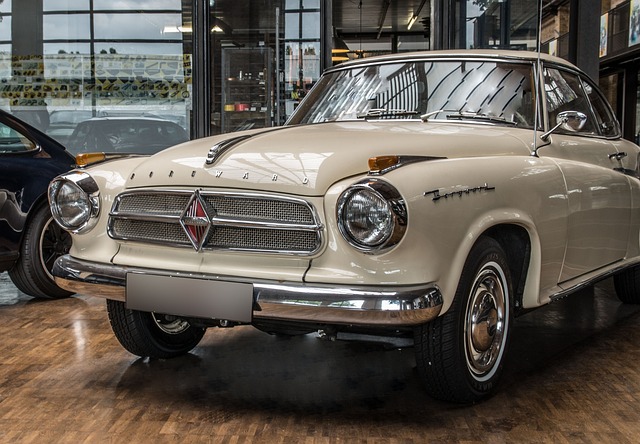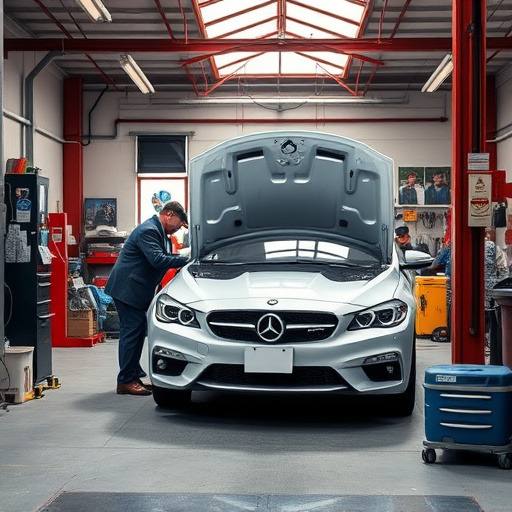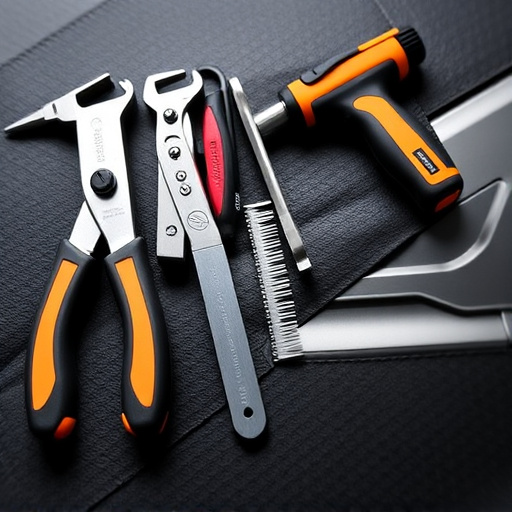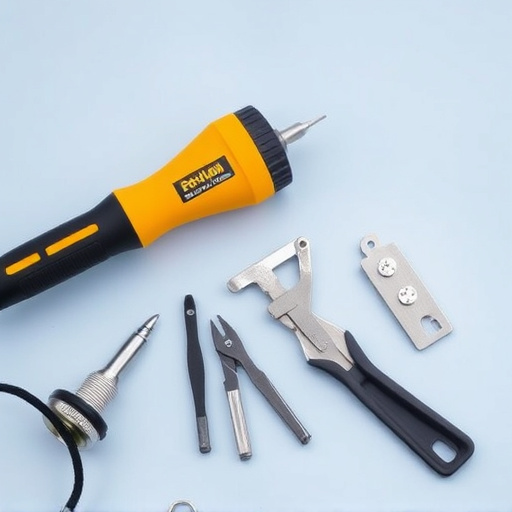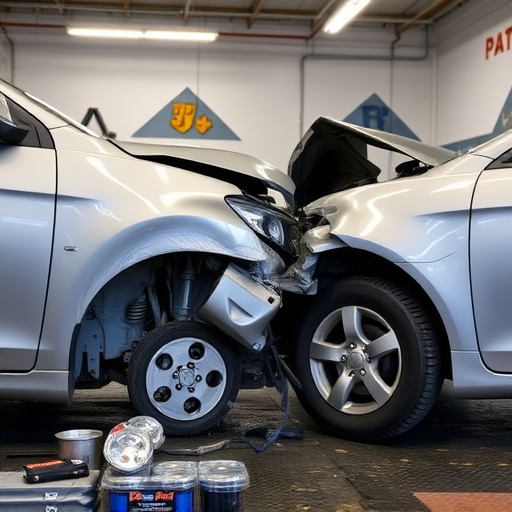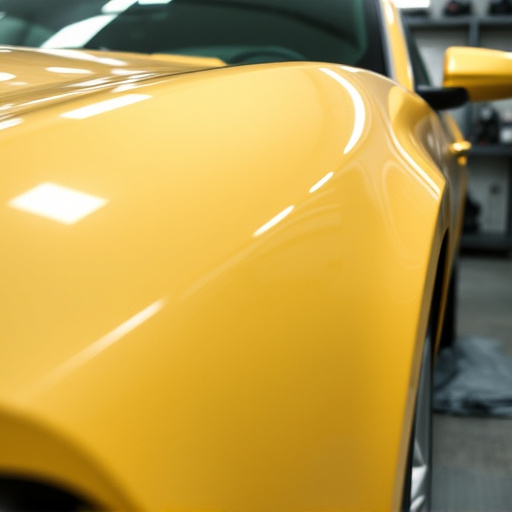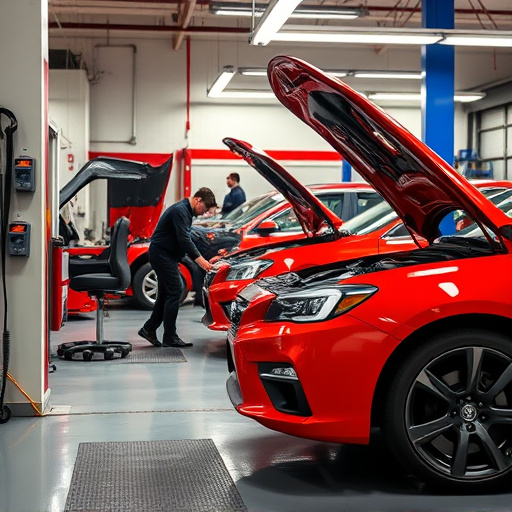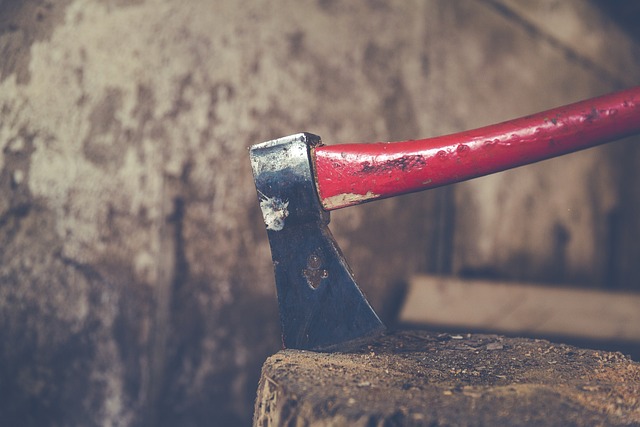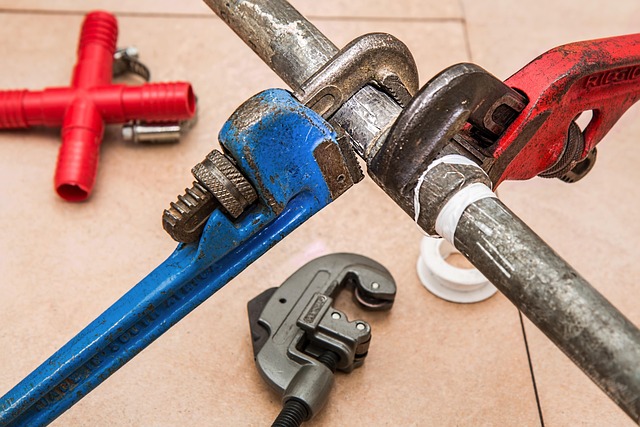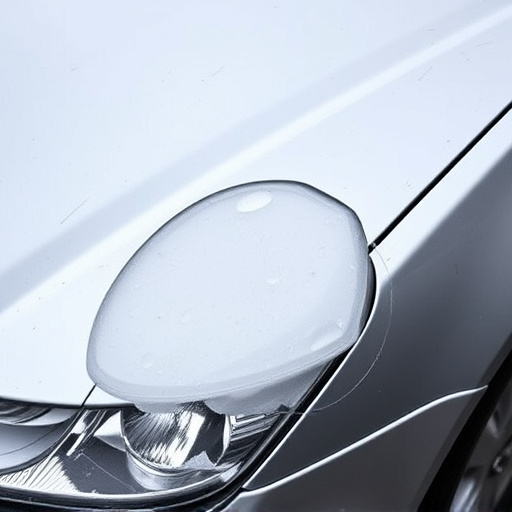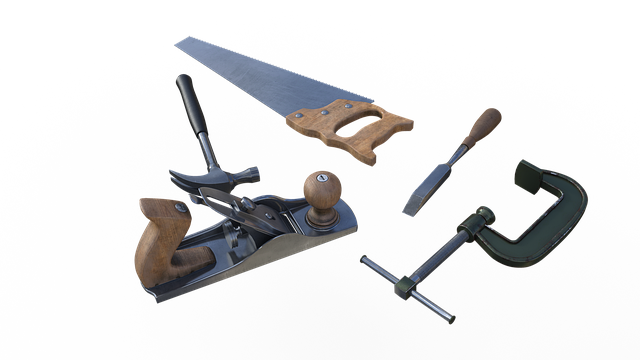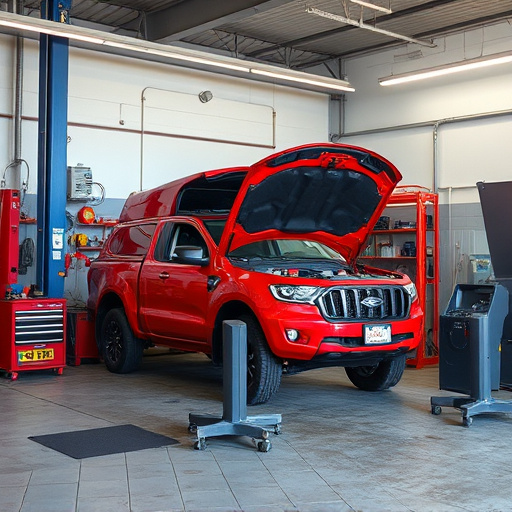Hydraulic frame machines are essential tools in auto body shops for precise vehicle frame alignment, including dent repairs. These machines convert hydraulic pressure into mechanical force using components like cylinders, pumps, valves, and actuators. Proper setup, regular maintenance, and understanding equipment capabilities are key to efficient alignment, whether for bumper repair or paint jobs. Optimizing alignment involves assessing the current setup, using advanced tools, calibrating regularly, training personnel, and incorporating practices from related industries for seamless results in auto maintenance.
In the realm of industrial machinery, hydraulic frame machines play a pivotal role due to their versatility and power. These complex systems require meticulous framing alignment for optimal performance and safety. This article guides you through the best practices for achieving precise alignment in hydraulic operations. From understanding the components of these machines to implementing effective strategies, we explore key considerations to ensure your hydraulic frame machine operates at peak efficiency, enhancing productivity while minimizing risks.
- Understanding Hydraulic Frame Machines: Components and Functionality
- Key Considerations for Effective Framing Alignement
- Implementation Strategies for Achieving Optimal Alignment in Hydraulic Operations
Understanding Hydraulic Frame Machines: Components and Functionality
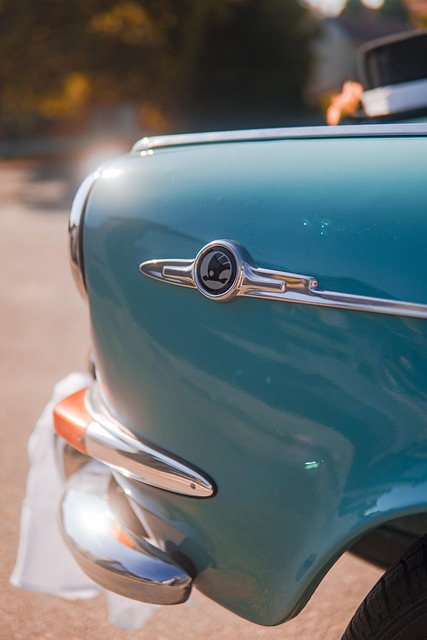
Hydraulic frame machines are specialized equipment designed to handle the intricate task of aligning vehicle frames, which is crucial in auto body shops and automotive body shop settings. These machines are a cornerstone of vehicle dent repair processes, ensuring precision and efficiency. The primary components include hydraulic cylinders, pumps, valves, and actuators that work together to exert controlled force on the frame during the alignment process.
Understanding how each part functions is vital for optimal performance. Hydraulic cylinders, for instance, generate linear motion by converting hydraulic pressure into mechanical force. Pumps regulate fluid flow, while valves control the direction and pressure of this flow, enabling precise adjustments. Actuators, in turn, convert hydraulic energy into mechanical movement, allowing for the intricate manipulations needed during auto body shop repairs, thus ensuring that vehicles are restored to their original structural integrity after damage, like a vehicle dent repair.
Key Considerations for Effective Framing Alignement

When aligning frames with hydraulic machines for tasks such as bumper repair or vehicle paint repair, several key considerations come into play to ensure precision and efficiency. The first is understanding the specific requirements of your equipment. Different hydraulic frame machines have varying capabilities and adjustments, so familiarizing yourself with these features is crucial. This includes knowing the machine’s precision, load capacity, and any specialized settings for tasks like car paint repair or bumper restoration.
Proper setup and calibration are equally vital. Ensure the work area is level and secure to minimize vibrations that could disrupt alignment measurements. Regularly inspect and maintain your hydraulic machines to keep them in optimal condition. This routine care guarantees consistent performance during frame alignment procedures, whether for minor repairs like bumper touch-ups or more intricate car paint repair jobs.
Implementation Strategies for Achieving Optimal Alignment in Hydraulic Operations
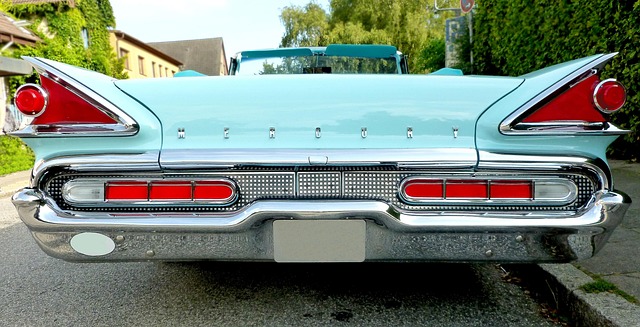
Achieving optimal alignment in hydraulic operations requires a systematic approach and implementation strategies tailored to the specific needs of each project. The first step is to assess the current setup and identify areas for improvement, considering factors like machine precision, frame condition, and environmental conditions. Regular calibration and maintenance play a crucial role in maintaining accuracy over time.
One effective strategy is utilizing advanced alignment tools designed specifically for hydraulic machines. These tools provide precise measurements and real-time feedback, ensuring frames are perfectly aligned with the hydraulic system. Moreover, training personnel on proper setup techniques and regular audits can significantly enhance consistency. Incorporating practices from industries like paintless dent repair and auto bodywork, where precision is paramount, can offer valuable insights into achieving seamless frame-hydraulic machine alignment, ultimately contributing to efficient auto maintenance processes.
Aligning frames with hydraulic machines is a critical process that ensures optimal performance and longevity. By understanding the components and functionality of hydraulic frame machines, and implementing effective alignment strategies, operators can maximize efficiency and reduce downtime. Key considerations, such as regular maintenance and precise measurements, play a pivotal role in achieving seamless operation. Adhering to these best practices will not only enhance productivity but also underline the importance of meticulous framing alignment in the world of hydraulic operations.
